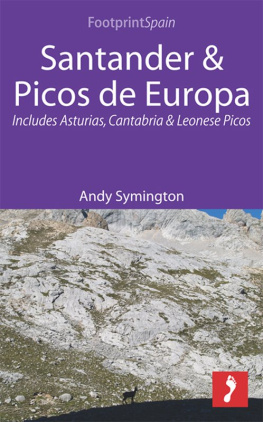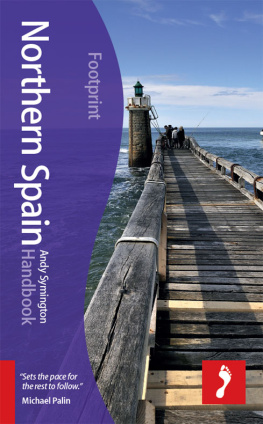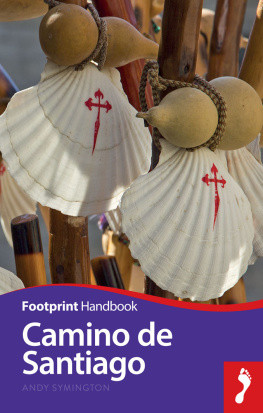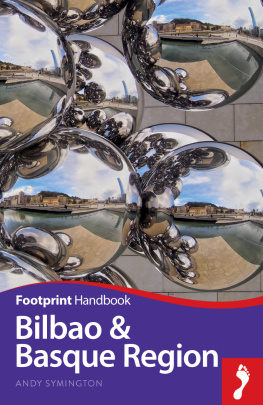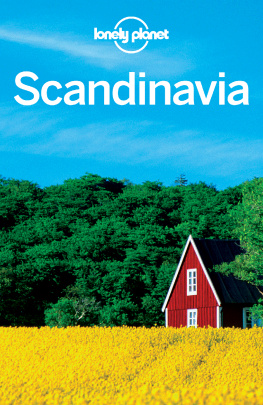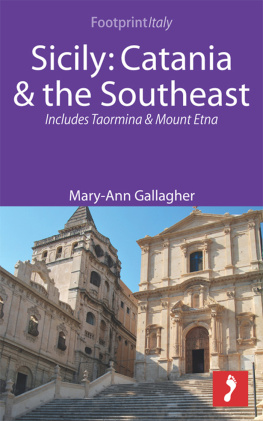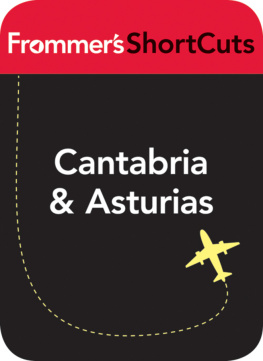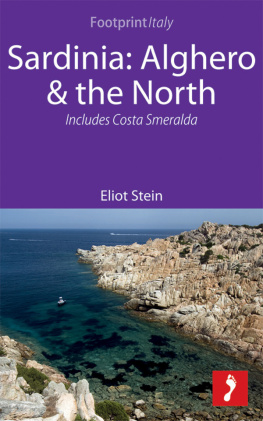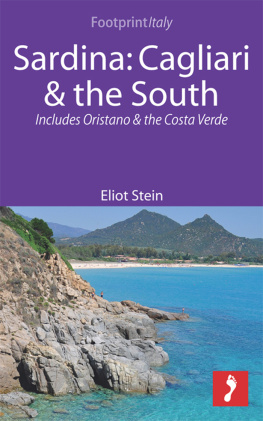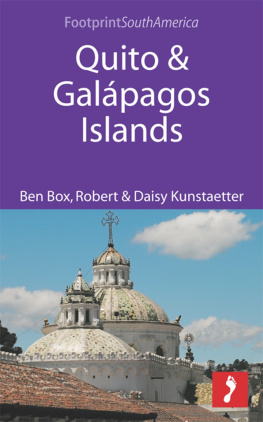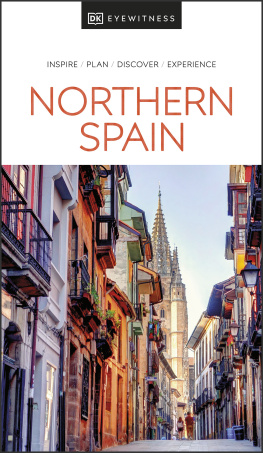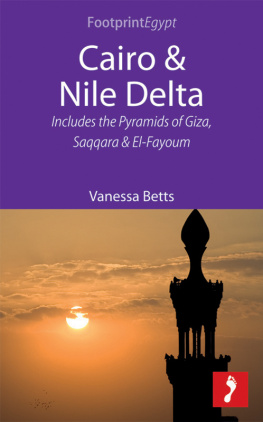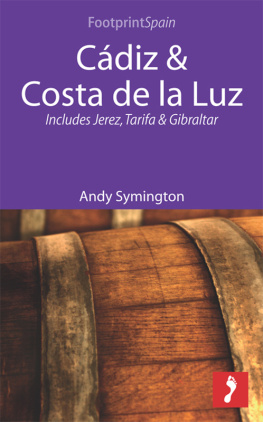Santander & Picos de Europa
Andy Symington
Genteel Cantabria is an island of reaction between the more radical Asturians and Basques. Historically part of Castilla, it prospered for many years as that kingdoms main sea access, and is still known as a well-heeled sort of place: people are prone to go to puerile lengths in their vanity about heraldry, claimed writer Gregorio Maran in the early 20th century.
Way back beyond then, from 18,000 BC onwards, a thriving Stone Age population lived in the area. Theyve left many remains of their culture, most notably the superb cave paintings at Altamira. These are now closed to the public, but you can see a replica of their very sophisticated art; for a more authentic atmosphere, head to one of the smaller caves in the region.
Apart from the Picos de Europa, Cantabrias principal attraction is its coast. Santander itself has some superb beaches and excellent restaurants. Santillana del Mar is misnamed (its not on the sea ) but is within easy reach of the sand; its a touristed but captivating and memorable town of stone mansions and cobbled streets, while Comillas has some startling modernista architecture, including a flamboyant Gaud building.
For such a small area, the Picos de Europa has a deservedly high reputation among visitors, who eulogize this part of the vast Cordillera Cantbrica, which is blessed with spectacular scenery, superb walking, abundant wildlife and comparatively easy access. The Picos cover the corners of three provinces: Asturias, Cantabria and Len, and have a fairly mild climate due to their proximity to the sea.
Asturias is a tough, proud land that suffered greatly in the 20th century, when its radical miners were put down brutally by the army in 1934 and again in the Civil War. It is is still one of the more left-wing and egalitarian regions in Northern Spain and, along with Euskadi, in many ways its friendliest. Wherever you head in the province youre guaranteed a gruff, genuine welcome and the sound of cider corks popping.
Planning your trip
Best time to visit Santander and Los Picos de Europa |
The whole of Spain is busy in July and August and, while the north isnt ridiculously crowded, youll need to reserve rooms in advance, for which youll be paying slightly higher prices, and significantly higher on the coast. That said, its an enjoyable time to be in the country as there are dozens of fiestas, and everything happens outdoors. Itll be pleasantly warm on the coast and in the mountains (although youre likely to see rain in both areas), and very hot in Castilla and La Rioja expect days in the mid to high 30s, if not higher.
June is a good time too, with milder weather and far fewer crowds, as Spanish holidays havent started. Spring (apart from Easter week) is also quiet, and not too hot, although expect coastal showers if not serious rain. In the mountains, some routes may still be snowbound. Autumn is a good all-round time. Prices on the coast are slashed (although many hotels shut), and there are few tourists. The weather is unpredictable at this time: cool, crisp days in the mountains are likely, but on the coast you could get a week of warm sun or a fortnight of unrelenting drizzle. The cities of the interior are likely to be dry but cold.
In winter, temperatures are mild on the coast and cold inland. Accommodation is cheap, but many places in the mountains and on the coast are closed. Skiing starts in earnest in late January.
Getting to Santander and Los Picos de Europa |
See .
Air
With budget airlines having opened up several regional airports to international flights, its easier than ever to get to Northern Spain. Ryanair fly to Santiago de Compostela, Valladolid, Santander, and Zaragoza from London, while Easyjet serve Bilbao and Asturias, Vueling link Bilbao, Santiago and A Corua with London or Edinburgh, and Air Berlin go to Bilbao and Asturias (among others), with a connection, from many German and Austrian airports. These airlines also run routes to other European cities. Other international airlines serve Bilbao (which is connected with London, Paris, Frankfurt, and several other European cities), Vigo, Santiago de Compostela, Zaragoza and Asturias. If youre not on the budget carriers, however, its often cheaper to fly to Madrid and connect via a domestic flight or by land transport. Madrid is a major world airport and prices tend to be competitive.
Domestic connections via Madrid or Barcelona are frequent. Iberia connects Madrid with most cities of the north, while Spanair and Air Europa also operate some flights. Flights are fairly expensive, with a typical MadridBilbao return costing 200. There are often specials on various websites (see below) that can bring the price down considerably. If flying into Madrid from outside Spain, an onward domestic flight can often be added at little extra cost.
While budget carriers often offer excellent value (especially when booked well ahead), they offer very little flexibility. Be aware that if youre only booking a week or so in advance, it may be cheaper with other airlines such as British Airways or Iberia. Cheap fares will usually carry a heavy financial penalty for changing dates or cancellation; check the small print carefully before buying a ticket. Some airlines dont like one-way tickets; its (ridiculously) often cheaper to buy a return.
Before booking, its worth doing a bit of online research. Two of the best search engines for flight comparisons are www.kelkoo.com and www.kayak.com , which compare prices from travel agencies and websites. To keep yourself up to date with the ever-changing routes of the bewildering number of budget airlines www.whichbudget.com is recommended. Flightchecker (http://flightchecker.moneysavingexpert.com) is handy for checking multiple dates for budget airline deals.
From the UK and IrelandCompetition between airlines serving Spain has benefited the traveller in recent years. Budget operators have taken a significant slice of the market and forced other airlines to compete. There are several options for flying to Northern Spain from the UK and Ireland.
The cheapest direct flights are with the budget operators, whose fares can be as low as 30 return but are more usually 85-160. Its easier to get hold of a cheaper fare if you fly off-season or midweek, and if you book well in advance. The routes offered at time of writing are: Ryanair: London Stansted to Santiago de Compostela, Santander, Valladolid, and Zaragoza. Easyjet: London Stansted to Bilbao, Asturias (Oviedo/ Gijn/Avils). BMI: Birmingham to Bilbao. Aer Lingus: Dublin to Santiago de Compostela and Bilbao. Vueling: London Heathrow to Bilbao and A Corua and from Edinburgh to Santiago. Check www.whichbudget.com to keep apace of the changes.
Bilbao is also served from London by Iberia and British Airways. These flights often end up cheaper than Easyjet if you are flying at a weekend with less than a months notice. APEX fares tend to be about 150-220 return and can be more economical and flexible than the budget airline if you are connecting from another British city.
Direct flights from London to Madrid are operated by Easyjet, Ryanair, Iberia, British Airways, BMI, Air Europa, Aerolneas Argentinas, Lufthansa and others. Iberia/British Airways also connect to Madrid directly from Manchester, Edinburgh, Glasgow and Birmingham, while Easyjet fly to Madrid from Edinburgh, Bristol, and Liverpool, and Spanair from Edinburgh.

